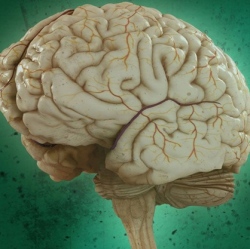
Scientists have developed a new method of coping with the complexity of studying the brain. They created probes containing biocompatible multipurpose fibers about 85 micrometers in width.
The new fibers can deliver optogenetic signals and drugs directly into the brain, while allowing simultaneous electrical readout to continuously monitor the effects of the various inputs. The fibers are made of polymers that closely resemble the characteristics of neural tissues, they are “soft and flexible and look more like natural nerves,” according to MIT assistant professor of materials science and engineering Polina Anikeeva, allowing them to stay in the body much longer without harming the delicate tissues around them.
Devices currently used for neural recording and stimulation, she says, are made of metals, semiconductors, and glass, which can damage nearby tissues during ordinary movement. “It’s a big problem in neural prosthetics,” she says. “They are so stiff, so sharp, when you take a step and the brain moves with respect to the device, you end up scrambling the tissue”, forming scars and leading to neuronal death surrounding the electrode.
The key to the new technology for neural probes is making a larger-scale version, called a preform, of the desired arrangement of channels within the fiber, optical waveguides to carry light, hollow tubes to carry drugs, and conductive electrodes to carry electrical signals. These polymer templates are then heated until they become soft, and drawn into a thin fiber, while retaining the exact arrangement of features within them.
